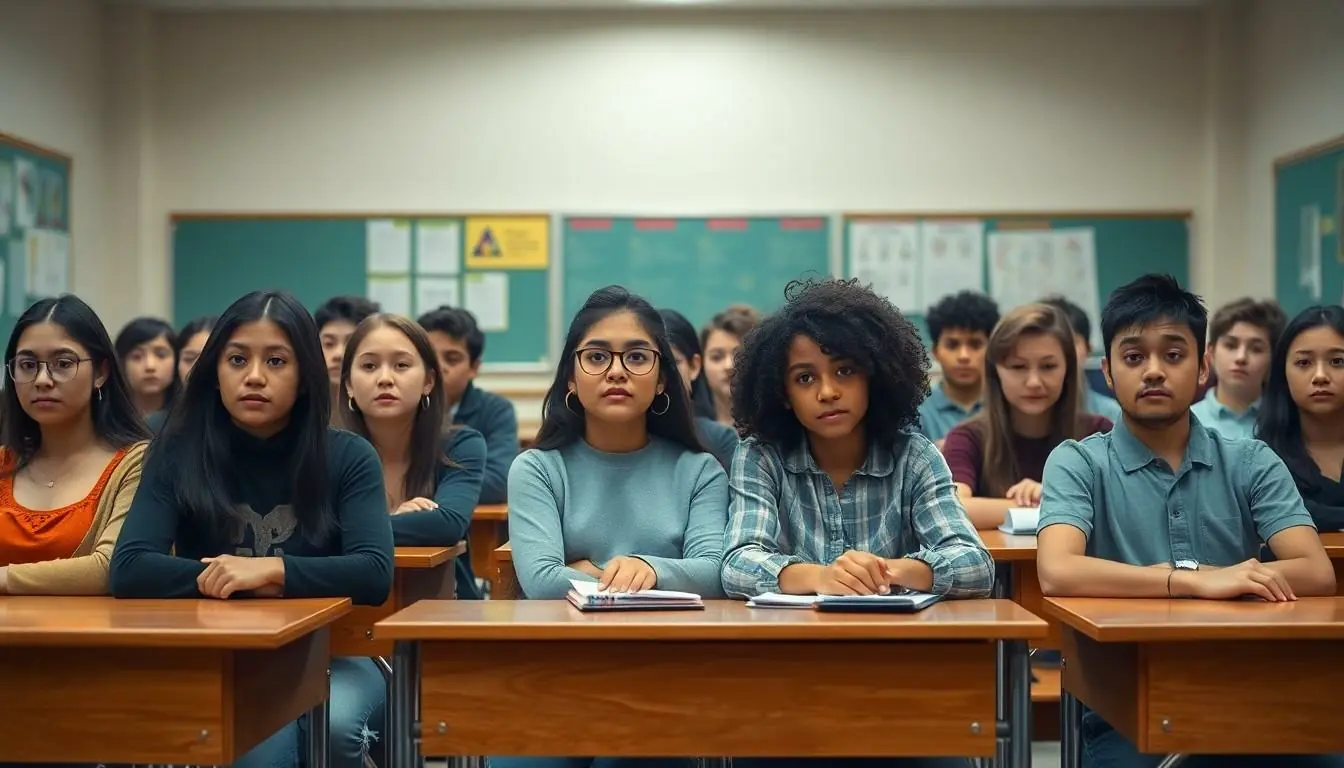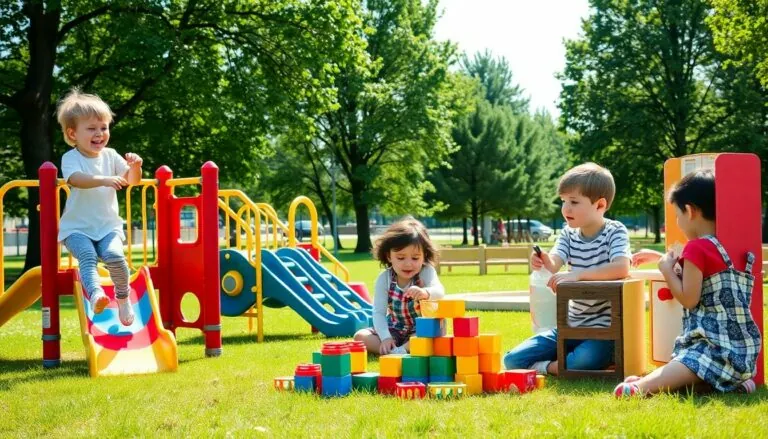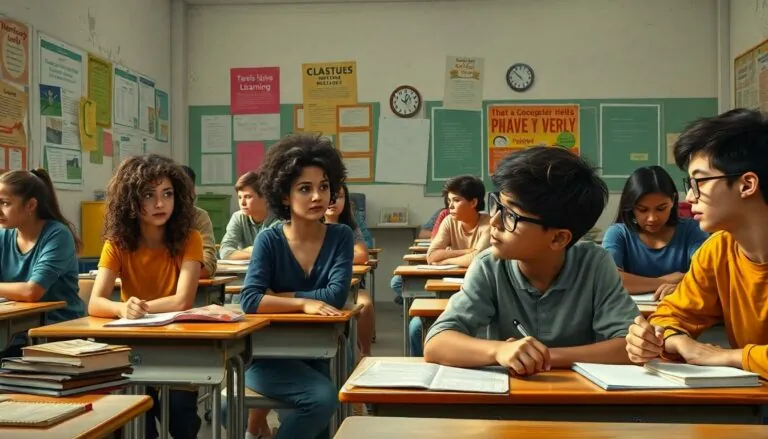Table of Contents
ToggleAlternative schools often promise a fresh start for students who struggle in traditional settings. But what if that promise is more of a mirage than a reality? While they might seem like a haven for creativity and personalized learning, the truth is these institutions can sometimes miss the mark. Instead of nurturing students, they can inadvertently foster an environment of confusion and limited opportunities.
Imagine a school where the curriculum feels like a game of dodgeball—students dodging structure and accountability. In some cases, alternative schools may lack essential resources and qualified staff, leaving students adrift in a sea of educational uncertainty. As we dive into the reasons why alternative schools might not be the best choice, it’s crucial to consider whether these institutions truly provide the support and guidance students need to thrive.
Overview of Alternative Schools
Alternative schools cater to students who struggle in conventional educational environments. These institutions emphasize unconventional teaching methods and aim to provide unique learning experiences. Despite this intent, some alternative schools face significant challenges.
Lack of essential resources often limits effectiveness. Many alternative schools operate with restricted funding, hindering access to necessary materials and technology. Qualified staff may also be in short supply. Students benefit from experienced educators, yet not all alternative schools attract or retain skilled professionals.
Flexibility in curriculum might appeal to some, but inconsistency presents problems. Different approaches to teaching can create confusion among students. Structured learning environments promote stability, while alternative settings may lack this critical component.
Furthermore, students in alternative schools may miss out on vital social interactions. Traditional schools often provide a chance for peer engagement, essential for developing communication skills. Alternative settings can isolate students, impacting their ability to form friendships and develop teamwork abilities.
Measurable outcomes often reveal disparities. Research indicates that students from alternative schools face lower academic achievement compared to their peers in traditional institutions. Test scores and graduation rates frequently demonstrate this trend, raising concerns about the long-term effects on students’ futures.
Alternative schools, despite their intentions, may not fulfill the needs of all students. Issues with resources, staffing, curriculum consistency, social opportunities, and academic performance underscore significant limitations. These challenges contribute to the perception that alternative schools may not be the best option for every learner.
Negative Impacts on Student Development
Alternative schools can negatively affect student development in several ways. Key issues include social isolation and academic challenges that hinder overall growth.
Social Isolation Concerns
Social isolation is a significant issue in alternative schools. Students often find themselves separated from their peers, which stunts social development. Limited interaction with diverse groups reduces exposure to different perspectives. Friendships and teamwork opportunities diminish, leading to communication skill deficits. Support networks that typically form in traditional schools may not exist in these settings. Research shows that students who experience isolation tend to struggle with emotional well-being, impacting their ability to connect with others in future academic or professional environments. Overall, the lack of social engagement in alternative schools raises concerns about long-term interpersonal skills.
Academic Challenges Faced
Academic challenges frequently arise in alternative schools. Many students in these environments report lower academic achievement compared to peers in traditional settings. Inconsistencies in curriculum and teaching quality contribute to knowledge gaps. A lack of qualified educators results in insufficient support for students needing help. Limited access to educational resources further compounds these issues, as students lack essential tools for learning. Additionally, alternative learning methods may not align with standardized testing requirements, reflecting negatively on student performance. Statistics reveal that many students in alternative schools may not meet proficiency standards, raising serious concerns about their future educational paths.
Lack of Standardization in Education
Alternative schools often present challenges due to a lack of standardization in education. These institutions may promise a tailored educational experience, but the actual delivery can vary significantly.
Variability in Teaching Quality
Teaching quality can differ greatly among alternative schools. Some educators possess remarkable dedication and expertise, while others may lack the necessary qualifications. This inconsistency impacts student learning experiences. Students in high-quality classrooms thrive, whereas those in lower-quality environments struggle to engage with the material. Reports indicate that a significant number of alternative schools employ fewer certified teachers than traditional schools, creating disparities in educational effectiveness. Without consistent teaching standards, students may face significant hindrances in their academic development.
Inconsistent Curriculum Standards
Curriculum standards across alternative schools often lack uniformity. Schools may develop unique curricula aligned with their educational philosophies, yet this freedom can lead to incomplete learning experiences. Students frequently encounter gaps in essential subject areas, as some schools skip foundational concepts altogether. Such disparities contribute to academic setbacks, making it challenging for students to meet statewide educational expectations. A standardized curriculum typically ensures that all students receive a comprehensive education, which alternative schools sometimes fail to provide. Variation in curriculum can result in knowledge gaps, negatively affecting student preparedness for future academic pursuits.
Limited Resources and Support
Alternative schools often struggle with limited resources and support, which negatively impacts student success.
Insufficient Funding Issues
Insufficient funding significantly restricts resources and materials in alternative schools. Many of these institutions rely on state and local funding, which often falls short compared to traditional schools. Lack of financial support translates into outdated books, inadequate technology, and insufficient extracurricular activities. Some schools do not have access to essential supplies, hindering the learning environment. As a result, students encounter barriers that prevent them from engaging fully with the curriculum. Reports show that schools with limited resources contribute to lower academic performances among students. This financial disparity creates an uneven playing field for those seeking academic success.
Staffing and Training Deficiencies
Staffing and training deficiencies further complicate the landscape of alternative education. Many alternative schools employ a higher percentage of unqualified teachers compared to traditional institutions. This situation arises partly from the lack of funding, which limits hiring qualified staff. Lack of training opportunities for existing educators leads to inconsistent teaching practices. Overall, inconsistencies in staff qualifications create significant gaps in student learning and engagement. Students benefit from experienced, well-trained educators who can foster a supportive learning environment. When this is absent, educational outcomes suffer considerably, leaving students without the guidance necessary to thrive academically and socially.
Perception and Stigma Surrounding Alternative Schools
Perceptions of alternative schools often vary, yet many view them as a last resort for students who struggle in traditional environments. Stigma arises when various groups categorize these institutions as less effective and isolates students further. Limited understanding of alternative schools perpetuates misconceptions surrounding their purpose, often portraying them as inadequate compared to standard educational institutions.
Isolation frequently exacerbates the stigma. Students in alternative settings may feel withdrawn, which contributes to their sense of otherness. Confusion about teaching methods and curriculum enhances feelings of alienation among peers in both alternative and traditional settings. Academic performance becomes a focal point, as students in alternative schools often report lower achievement levels, reinforcing negative perceptions.
Educational professionals recognize that not all alternative schools are created equal. Variation in the quality of education contributes to conflicting opinions about their effectiveness. Many alternative schools face challenges relating to resource allocation and staffing qualifications, yet some educators strive to provide the best possible learning experiences. Reports indicate that an increased number of unqualified teachers in these settings can lead to deficits in instructional quality.
Public opinion largely hinges on the visible struggles of students in alternative schools. Misunderstandings persist, particularly regarding the factors behind student placements, including behavioral and academic challenges. Advocacy for students in these environments faces hurdles due to the prevailing stereotypes that individuals associate with alternative education.
The blend of perception and stigma notably shapes the experiences of students navigating alternative school systems. In many cases, the combination of limited resources, inadequate educator support, and societal misconceptions impacts student growth and development. Efforts to dispel myths surrounding alternative education are crucial to fostering a more inclusive understanding of its role in the larger educational landscape.
Conclusion
Alternative schools often fall short of their promises, leaving many students without the support they need to thrive. The challenges associated with limited resources, unqualified staff, and a lack of standardization create an environment that may hinder academic achievement and social development.
Students frequently face isolation and confusion due to inconsistent teaching methods and curricula, which can stifle their growth. As public perception continues to view these institutions as a last resort, the stigma surrounding alternative schools can further alienate students.
Ultimately, while alternative schools aim to provide a different educational experience, their shortcomings raise significant concerns about their effectiveness and the long-term impact on student success.








